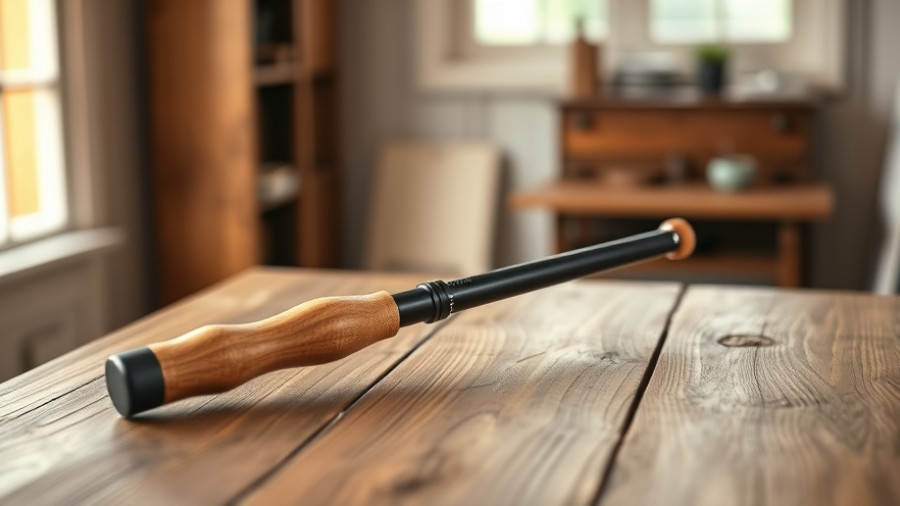
Understanding Dog Safety Sticks: A Life-Saving Tool for Dog Owners
With approximately 4.5 million dog bites reported each year in the United States, safety while walking your dog is paramount. Dog safety sticks are becoming invaluable for dog owners seeking to protect themselves against aggressive dogs. This article explores the necessity, effectiveness, and techniques of utilizing a dog safety stick effectively.
What Makes a Dog Safety Stick Essential?
A dog safety stick serves as both a physical barrier and a visual deterrent against approaching aggressive dogs. Typically measuring between 36 to 48 inches in length, these sticks provide sufficient reach without compromising your ability to maneuver. Lightweight materials like aluminum coupled with features like non-slip grips and reinforced tips increase durability and control during encounters.
Design Features That Ensure Effectiveness
When selecting a dog safety stick, consider features such as weight distribution and materials. Ideal safety sticks weigh between 8-12 ounces, allowing you to wield them effectively. Grip texture is vital; a textured or rubberized handle prevents slipping in foggy or wet conditions. When choosing between telescoping or fixed-length models, trainers recommend picking a fixed-length stick for its consistent performance.
Legal Considerations: Know Your Rights
In most states, dog safety sticks are classified as walking aids rather than weapons, making them legal to carry in public. However, local laws vary, so it's crucial to understand regulations in your area. In California, certain designs may have restrictions, while states like Texas and Florida do not impose such limitations at all.
How to Use a Dog Safety Stick Effectively
To make maximum use of your dog safety stick, it's essential to grasp it correctly. Your dominant hand should control the stick about 8-10 inches from the top, while your non-dominant hand can grip the midpoint. This balanced grip allows for swift movements when reacting to an aggressive dog.
Plant your feet shoulder-width apart and bend your knees slightly to maintain stability. Hold the stick diagonally across your body at a 45-degree angle to appear less threatening while effectively creating a barrier. Stick height should also remain below shoulder level to avoid escalating the dog's aggression.
What to Do During an Encounter
If an aggressive dog approaches within 15 feet, take a calm yet assertive stance using your stick to create distance. As the dog closes in, extend the stick slowly while backing up to emphasize a non-threatening posture. Combine this with a firm “No” or “Stay” command to leverage auditory cues. If the dog persists, tapping the ground with your stick can produce noise to further establish your boundary.
When Retreat Becomes Necessary
Recognizing when to retreat is as important as the encounter itself. If a dog shows multiple aggression signs or if backup dogs appear, prioritize your safety over confrontation. Always back away slowly while keeping the stick between you and the approaching dogs until you reach a safe distance.
Choosing the Right Stick for Real Protection
Investing in a premium dog safety stick can make all the difference during an aggressive encounter. Recommended sticks like the Cold Steel Brooklyn Crusher or the ASP Friction Loc Baton are designed for real protection, ensuring they can withstand high-pressure situations.
Why Regular Practice is Key
Both new and seasoned dog owners can benefit from regular practice using their dog safety stick. Familiarity with holding stances, retreat patterns, and deterrent commands builds muscle memory, ensuring that protection tactics become second nature in emergencies. Weekly practice can help translate newly learned skills into effective real-world applications, increasing confidence and overall safety during walks.
Final Thoughts: Empowering Dog Owners with Knowledge
Between the importance of responsible ownership and the capability to act decisively in the face of danger, mastering the use of a dog safety stick takes both preparation and practice. Confidence that stems from knowledge and experience is invaluable when it comes to ensuring the safety of yourself and your beloved pet. For more comprehensive guidance on dog safety tips and proper equipment, visit resources like DogingtonPost, which offers expert insights into responsible pet ownership.
 Add Row
Add Row  Add
Add 




Write A Comment